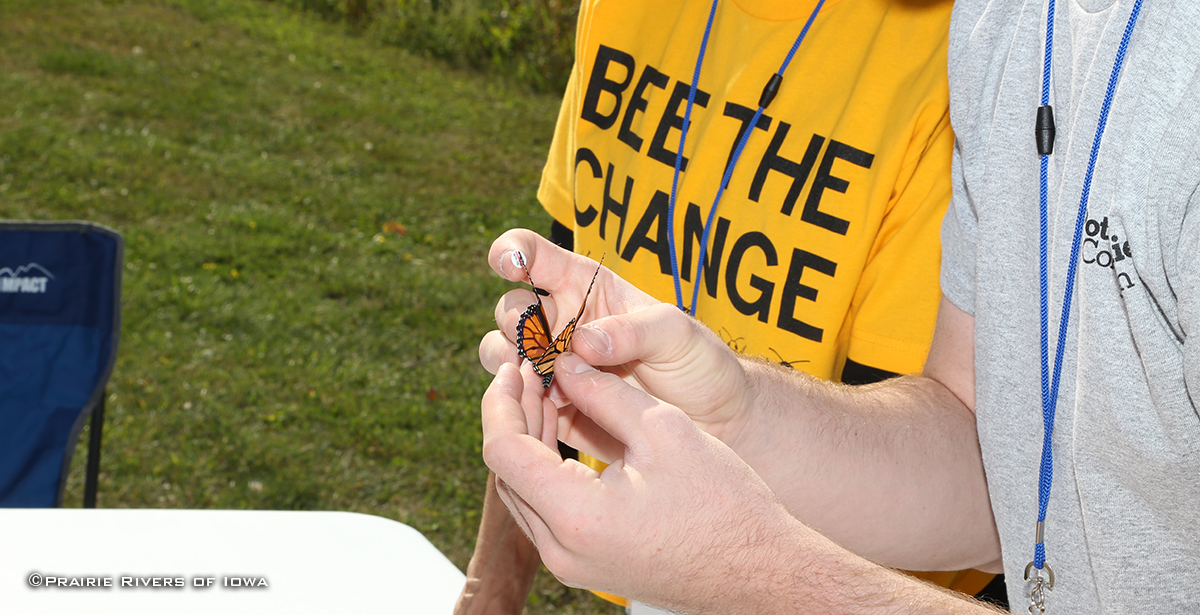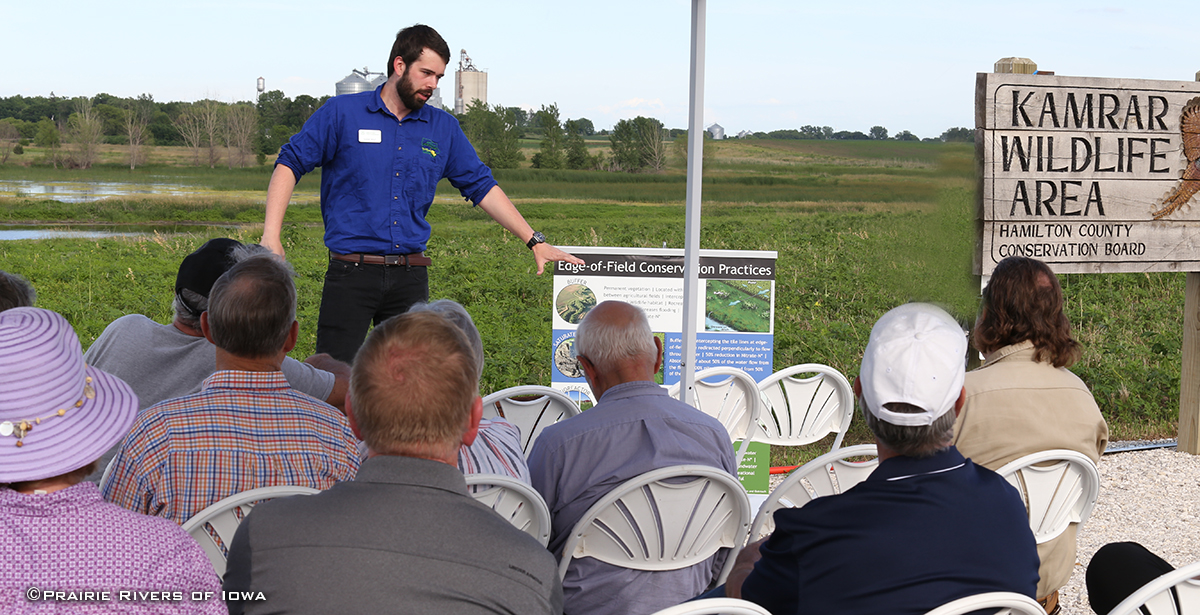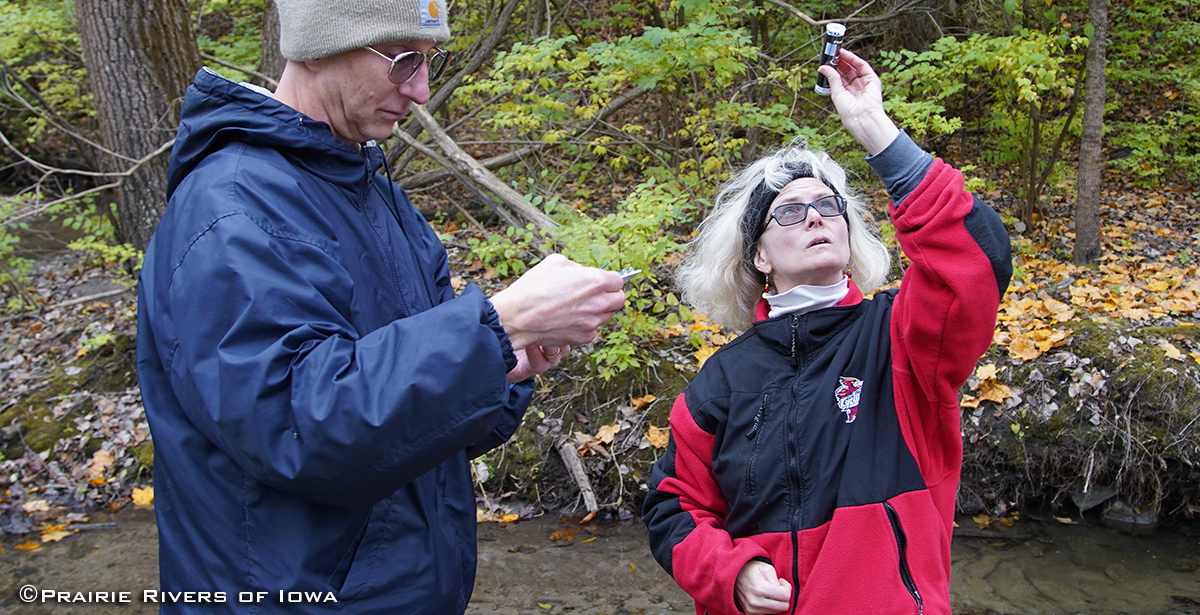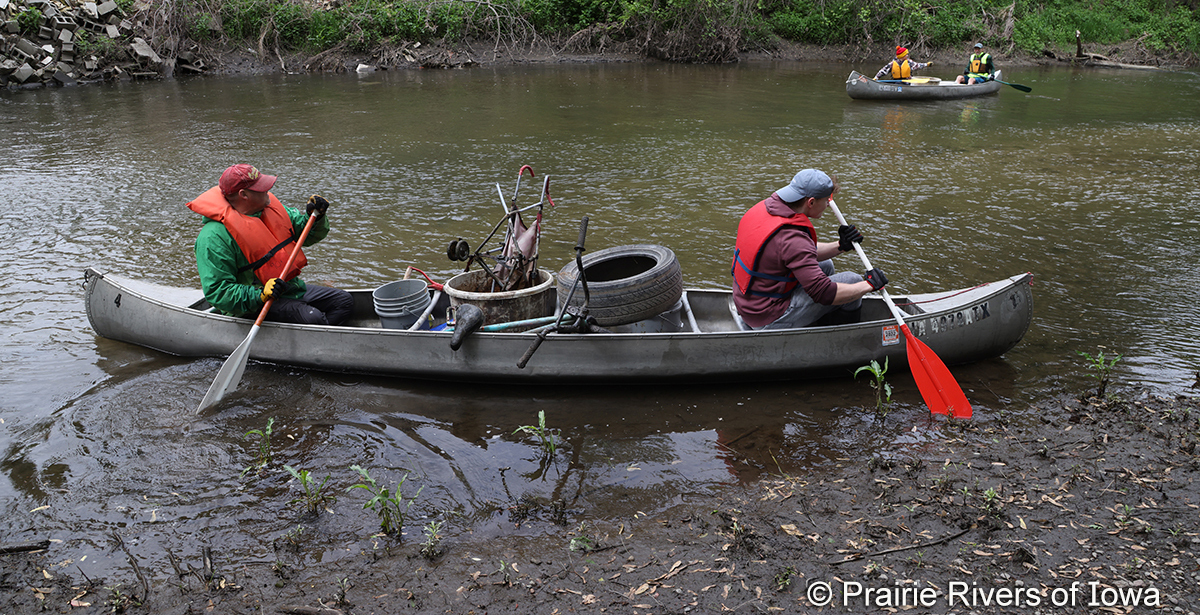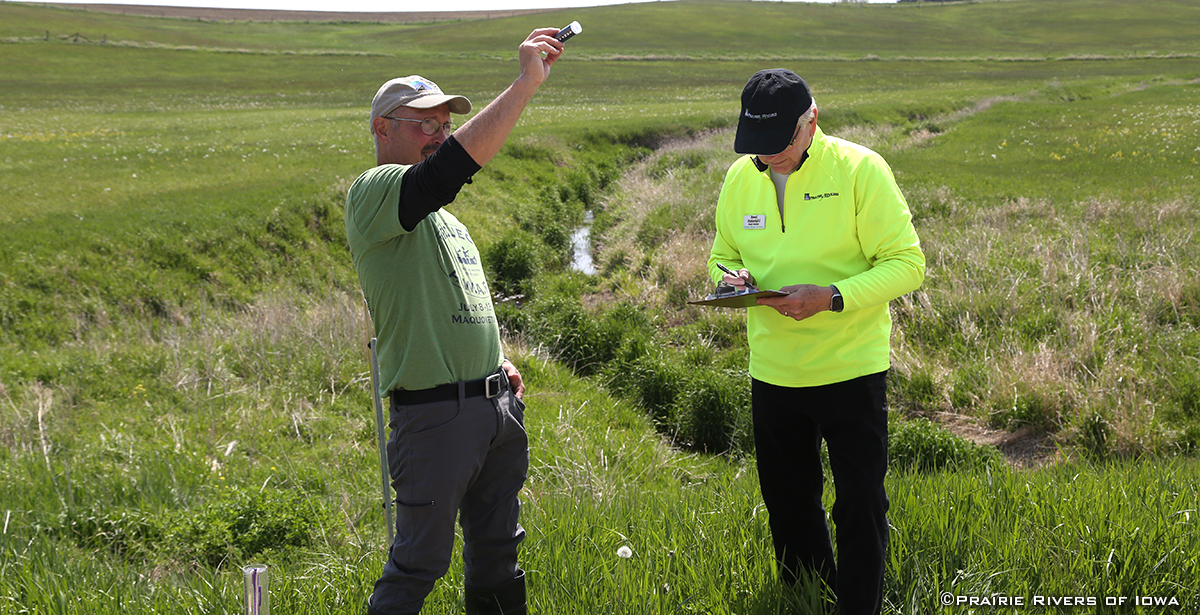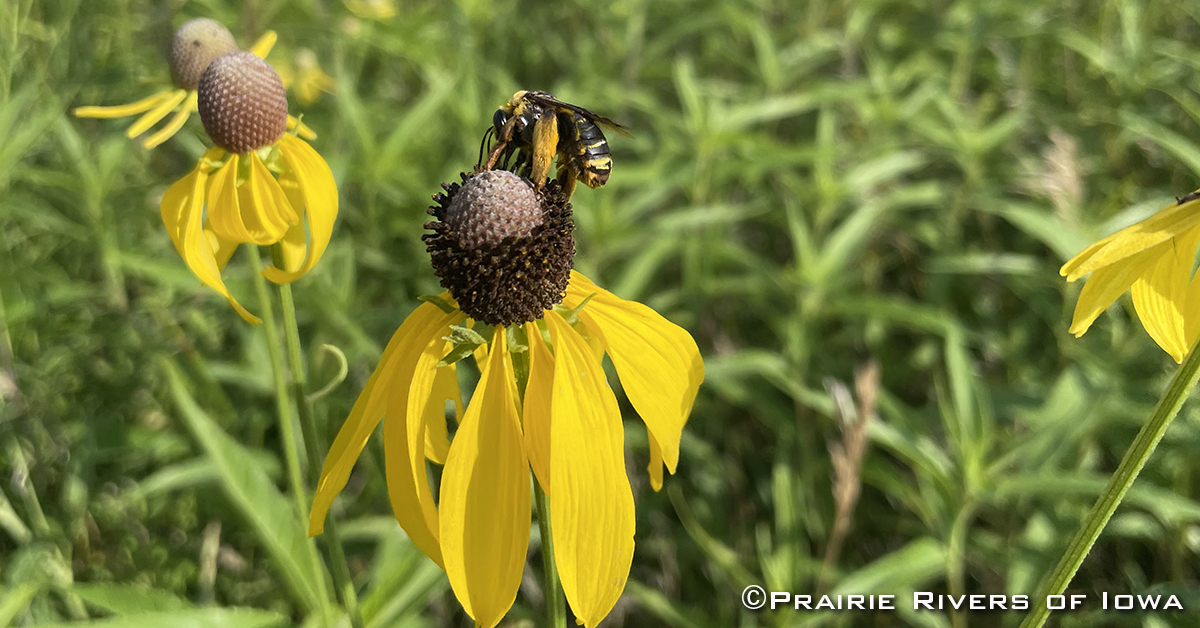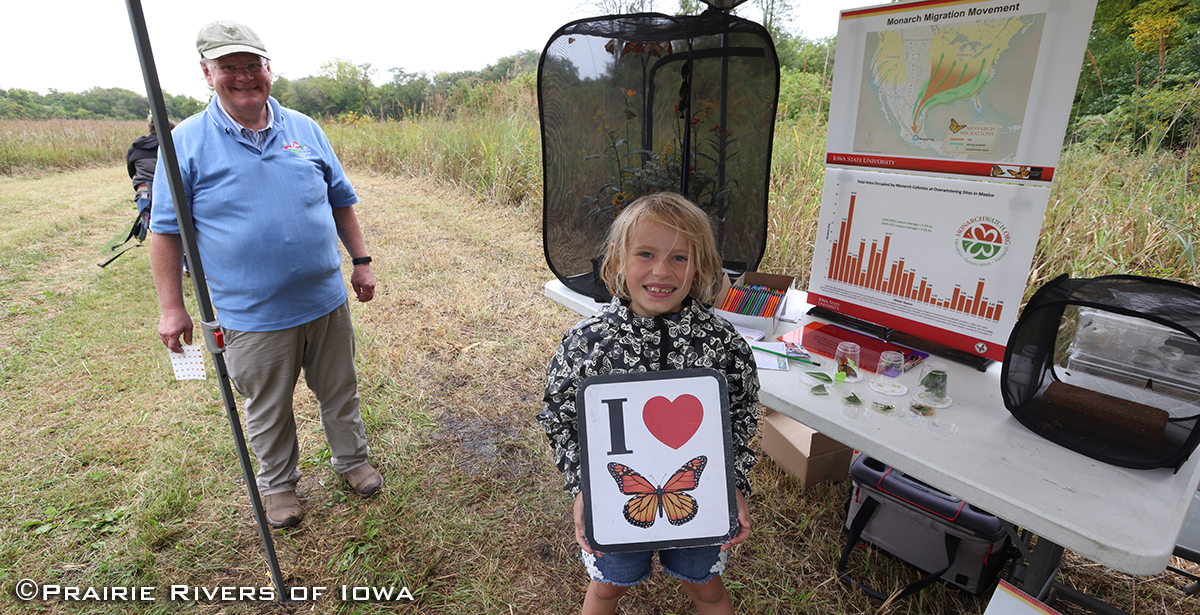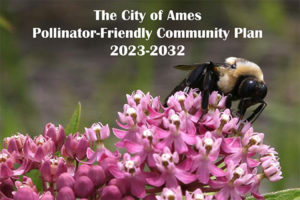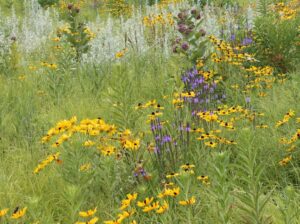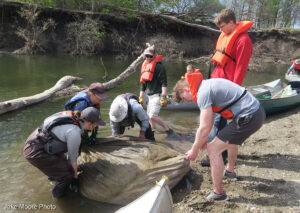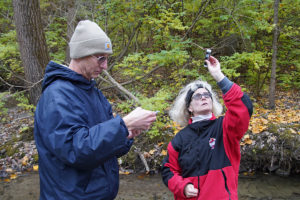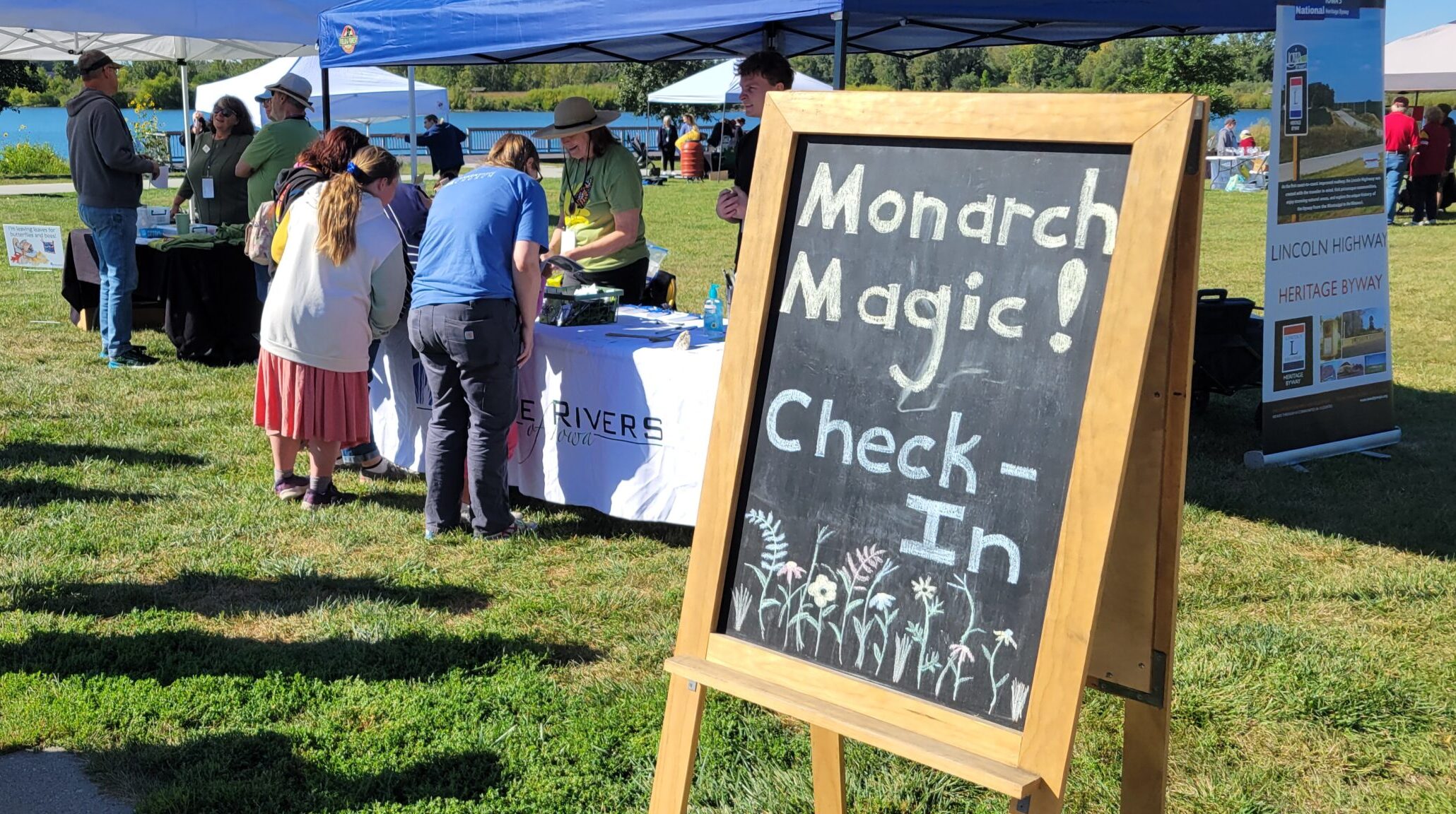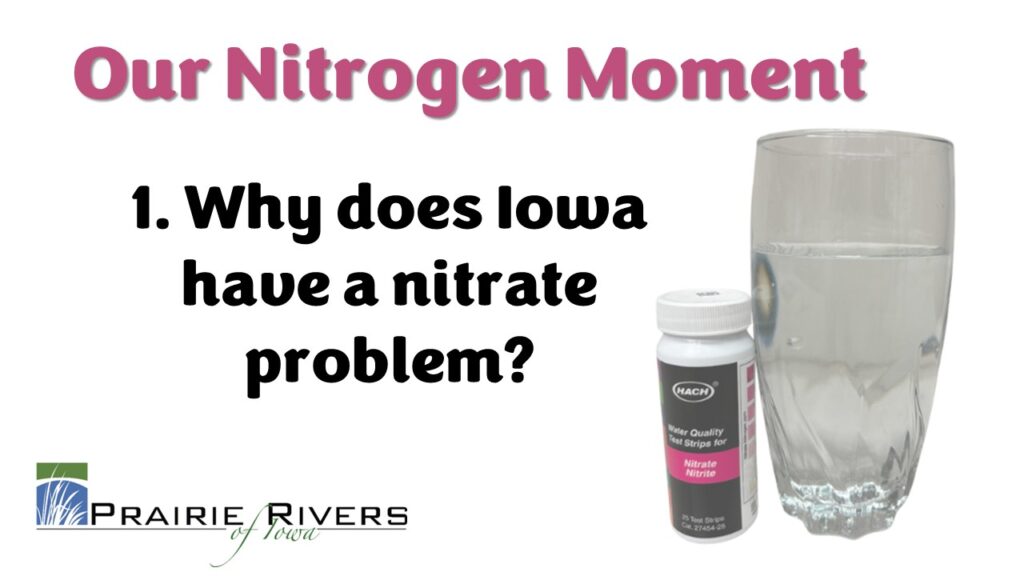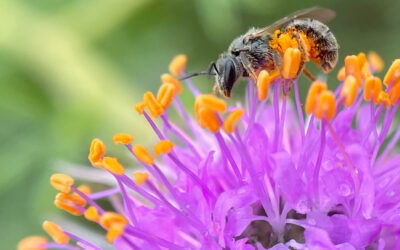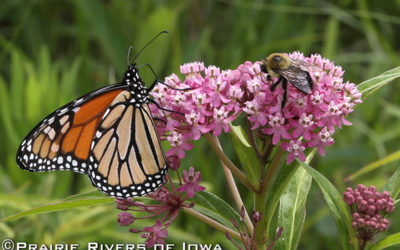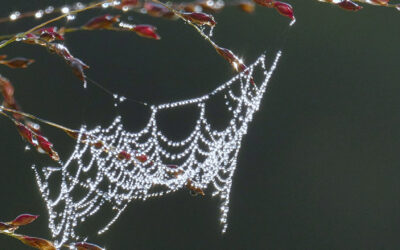Watersheds and Wildlife
The Watersheds and Wildlife Program works to improve water quality in rivers and lakes and to restore habitat for the 100 species of butterflies and 400 species of bees found in Iowa. We accomplish this work through robust education and monitoring, and by partnering with both private landowners and local government.
What’s a watershed? Confused about water quality? Here’s an FAQ with links to some of our most accessible resources.
Past projects have focused the Ioway Creek and Skunk River watersheds in Story, Boone, and Hamilton counties.
Here is what we’re up to now:
Ames Pollinator-Friendly Community Plan
Prairie Rivers and the City of Ames have a vision to become a leader in developing and sustaining pollinator habitat that will enrich the quality of life for the people and wildlife of Ames.
Prairie Seed Bank
Creek Cleanups
So far, we helped organize six volunteer events that removed over 12,700 pounds of trash from Ioway Creek, the Skunk River and other streams in central Iowa. Depending on the weather, we may be walking, wading, or paddling canoes, but it’s always a good time! Keep an eye on our Events page–we usually plan one for late April or early May.
Water Monitoring in Story County
Water quality in most creeks and lakes in Story County is not tested by state agencies, so in 2020 we worked with 9 partner organizations to plan for how we could sustain a monitoring program at the local level. Prairie Rivers continues to support the effort by collecting samples, organizing volunteer events, and making sense of the data.
Environmental Education and Community Events
Monarch Magic is an annual monarch tagging and educational event in Ames aimed at families. We also participate in tabling events and regularly give talks about water quality, pollinators, and conservation to community groups around the state.
Educational Videos
Conservation Connection Blog
A big part of our work is telling engaging stories to help explain the science and policy behind the environmental issues we work on. Here are three of our latest posts from the Conservation Connect Blog. We’ve also compiled some of our most accessible content related to soil and water (which can get complicated) as an FAQ.
A Year of Pollinator Progress!
Prairie Rivers was able to accomplish many pollinator goals in 2023! From mobilizing a city-wide plan to improve the plight of pollinators to receiving a National Fish and Wildlife Foundation grant, we have been working hard to educate the public and serve our natural community!
Prairie Rivers of Iowa Has Had a Busy and Productive 2023
Our programs this year reached kids, families, landowners, historic homeowners and business owners, communities, natural resource professionals, and like-minded not-for-profits. We also oversaw a national prairie conference in Iowa.
Unexpected Friends: Bugs Are Not Invading Your Home
This time of year we seem to notice more bugs indoors. In this article we discuss accurate sources of information about bugs, common misconceptions, and bugs you may see in your home this time of year.
Katelyn Rinicker
Pollinator Conservation Specialist
Dan Haug
Water Quality Specialist

